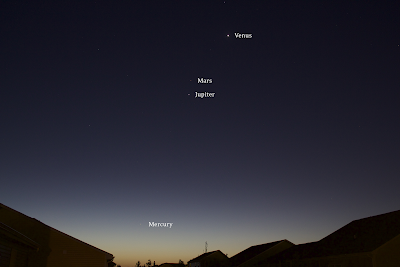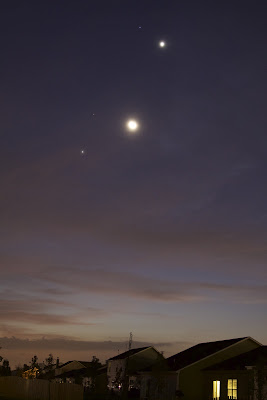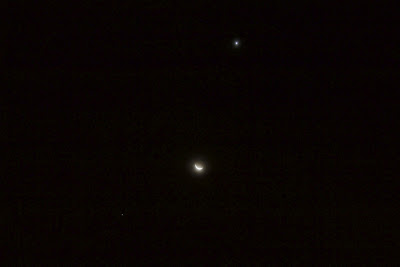This might seem obvious after you hear it, but I have been playing around with my sunset photos and I noticed that the very best sunsets are the ones that fill the entire sky with eerie wisps of colorful feathery fire. Sometimes the area near the horizon is gorgeous, but snapping a wide angle photo just doesn't do it justice. Wide angle sunset photos clog up Instagram and *
totally get like zero likes, amiright!?* - eh hem. So what can be done?
I like to use a zoom lens to fill the entire frame with the good stuff and crop out the boring regular clouds.
This gives the impression of a sky filled with amazing color floor to ceiling, when really it could just be a thin band of color near the horizon. It's not cheating, it's composition!
You can use this technique to get some amazing sunset shots without being tempted to juice up the magic in Photoshop. Don't touch the saturation or contrast, just adjust the framing.
I went back in time through my archives to look for wide angle versions of my favorite sunset photos to show the difference. It's sort of a behind the scenes look at what the sky 'really' looked like.
 |
| Canon T5i aperture priority mode (Av), ISO 400, 33mm cropped, f/4.5, 1/200 sec |
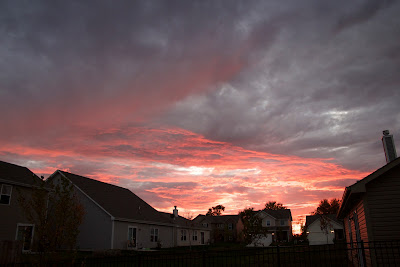 |
| Canon T5i aperture priority mode (Av), ISO 400, 18mm, f/4, 1/50 sec |
Now you might be thinking, "come on Eric, you aren't using the same camera settings, that's not fair to attribute the better photo to the focal length and not the exposure." To which I would say I was shooting in aperture priority (Av) mode which means the camera is doing the work calculating the best exposure for what is in frame - so when I have more gray clouds in frame it tries to accommodate those as well.
Tightening the shot by zooming in was the easiest and fastest way to get a better sunset photo.
Let's try another one, here we see an unusual sky color - on it's own not bad. But next we see it being used as an abstract background that fills the entire frame.
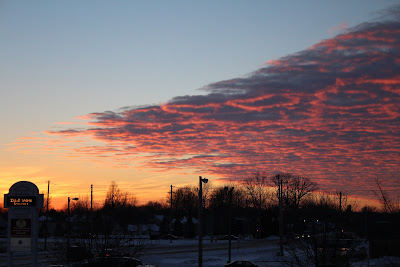 |
| Canon T5i, ISO 800, 53mm, f/5.6, 1/800 sec |
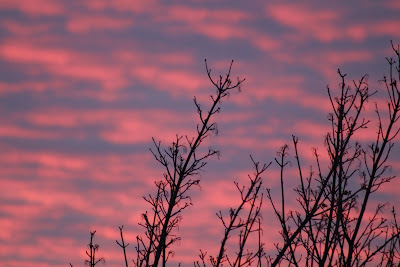 |
| Canon T5i, ISO 800, 300mm, f/5.6, 1/250 sec |
Ok, I saved my best for third - this example really drives home the point because both the wide and tight shot use the same ISO and shutter speed. You can clearly see in the wide angle shot that the sunset is neat but nowhere near as mind blowing as the tighter shot leads you to believe. It looks like the entire sky is blood red, when really it's just a strip near the horizon. Nevertheless, it makes a nice backdrop for the utility pole - can you spot the pole down by the horizon in the wide angle shot?
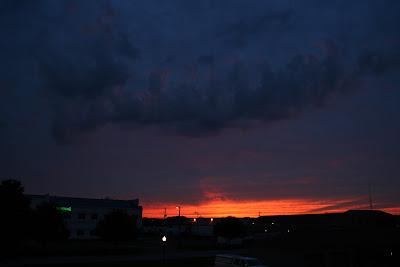 |
| Canon Rebel XT, ISO 400, 18mm, f/4.5, 1/50 sec |
 |
| Canon Rebel XT, ISO 400, 300mm, f/5.6, 1/50 sec |
So there you have it - some examples of how shooting sunsets close to the horizon can make a thin strip of color look like a magical magnificent sunset.


